Two weeks ago, Vineyard Wind was touting how it had grown to be the largest offshore wind farm in the country when it brought its 10th turbine online. It’s all come crashing down since.
Over the weekend, one of the blades on the offshore wind energy company’s turbines broke — spilling white and green fiberglass debris into the ocean. On Thursday, a large chunk of the blade separated from the turbine and tumbled into the water.
Officials with Vineyard Wind and the turbine’s manufacturer GE Vernova are investigating how the 107-meter blade folded over, but the project’s been shut down indefinitely until federal regulators can figure out what went wrong.
It’s a major setback for Vineyard Wind, which boasted its planned 62-turbine project about 14 miles south of the Island as being the “forever first” commercial scale offshore wind energy project in the U.S.
It could also be a blow to the nascent industry that has been setting its roots off the Vineyard and beyond in New England, but was already facing headwinds in a turbulent economy.
The Vineyard Wind incident started unfolding on Saturday, July 13. At around 7 p.m., the blade bent over about 20 meters from its base. The issue triggered alarms within Vineyard Wind, and the system automatically shut down.
According to Vineyard Wind, the company immediately contacted the U.S. Coast Guard and set up a 500-meter safety zone around the turbine.
The issue was isolated to a single turbine at the southernmost edge of the wind farm’s 167,000-acre lease – making it about as far away from the Vineyard as possible. The turbine was still in the commissioning phase and had been undergoing testing.
But with the turbine broken and flipped in the wrong direction, an unknown amount of fiberglass inside the blade began spilling out into the water.
In the days after the break, Vineyard Wind said it dispatched vessels to recover the large pieces of blade that had fallen into the water, but early this week Nantucketers began finding sharp shards of fiberglass washing on their shore.
Though Vineyard Wind said the debris was non-toxic, the town feared the pointy pieces posed a danger to beachgoers and closed the island’s south side beaches to swimming.
By Tuesday, a herculean effort to rid Nantucket’s sandy shores of the green and white fiberglass had begun. Vineyard Wind deployed its own teams and hired other workers to help with cleanup, but lifeguards, town staff and Nantucketers young and old pitched in.
The company urged people to leave the clean up to Vineyard Wind, which plans to collect the fragments for investigative purposes as well as dispose of them afterwards off-Island.
Due to the currents and wind, the Vineyard’s south shore seems to have been spared from the debris. Beach officials on Chappaquiddick, Edgartown and Chilmark reported Wednesday that there was no sign of fiberglass, though they were keeping their eyes peeled.
“We haven’t seen anything in the last two days,” said Andrew Kelly, an Edgartown parks commissioner.
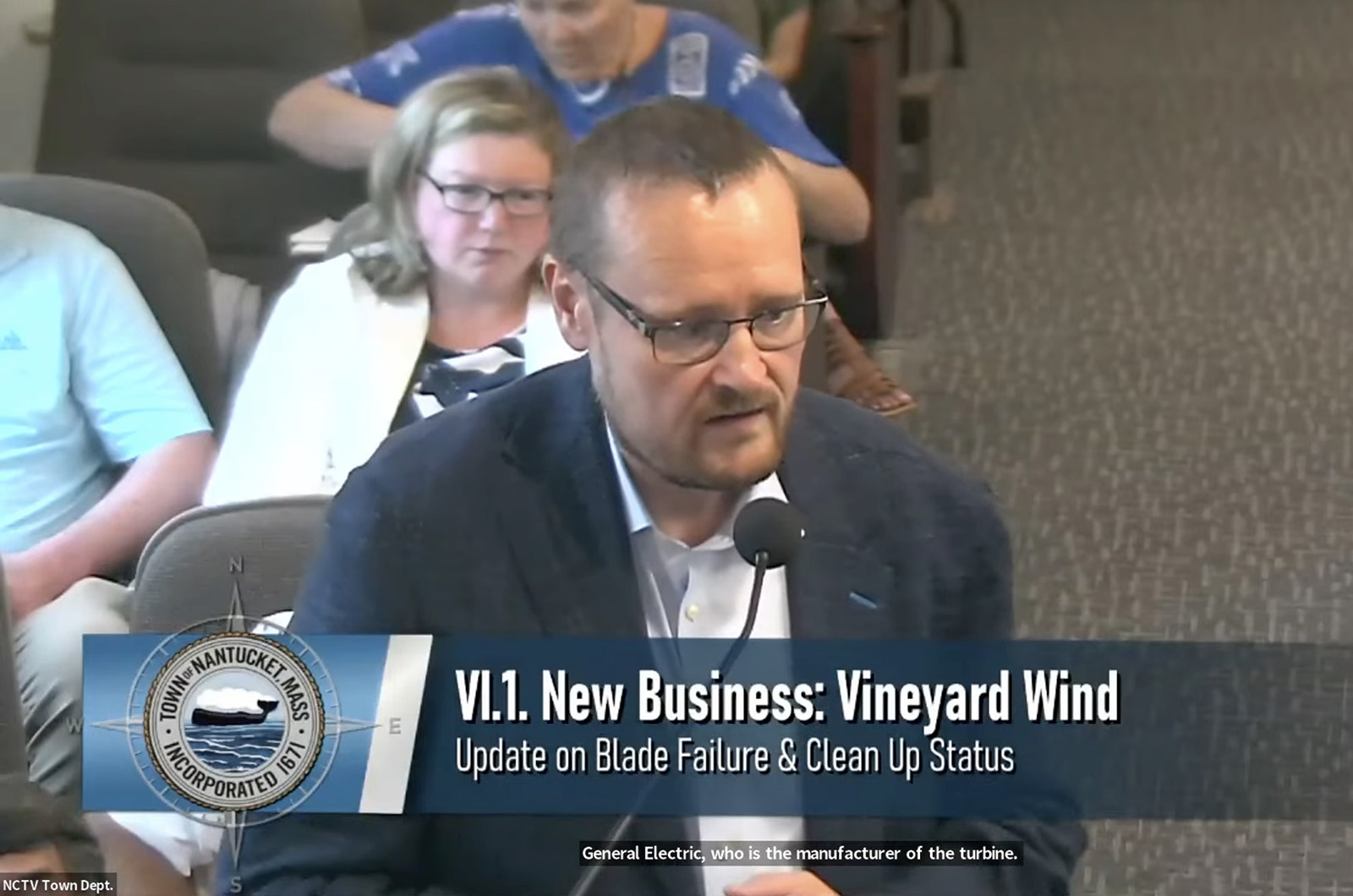
Vineyard Wind was also trying to ascertain how much, if any, debris had made it over to the small islands of Muskeget and Tuckernuck that sit between Nantucket and the Vineyard.
What went wrong with the blade isn’t clear. The company had installed three newly manufactured replacement blades on this particular turbine after one of the original blades was damaged during the lifting process and subsequently removed from the construction areas.
The one that broke was one of the replacement blades, officials said.
By Wednesday evening, Vineyard Wind worried the broken blade would detach completely from the turbine, and new debris had already fallen in the water. A boom to attempt to catch the litter was being set up.
On Thursday, Vineyard Wind confirmed that a signficant part of the blade broke off from the turbine and marine crews were onsite overnight to try and remove the new debris.
“We are staying apprised of GE Vernova’s efforts to manage the situation, including the removal and recovery of the remaining blade attached to the turbine,” Vineyard Wind said in a statement. “With public officials, we will continue to keep the Islands informed of developments as we work closely with state, federal, local, and tribal partners to respond to this evolving situation, with safety of our personnel, the public, and the environment as our highest priority.”
Though GE Vernova officials did not believe that the blade would damage the rest of the turbine if it fell, it raised more fear for beachgoers concerned they could be pierced by the floating debris.
News of the teetering blade came up as Vineyard Wind and GE Vernova leaders were being grilled by irate Nantucket residents at a town select board meeting. Vineyard Wind CEO Klaus Moeller had to leave what would eventually be a nearly four-hour meeting to deal with it.
After the initial damage over the weekend, the Bureau of Safety and Environmental Enforcement, which oversees offshore wind projects, issued a suspension order to Vineyard Wind to cease power production from all of its turbines until it could be determined whether the blade failure affects any other turbines.
The order also halted any further construction for the project – a prospect that could set the project back dramatically since the company had been hoping to take advantage of the calmer summer seas.
The bureau also called for a preservation order to safeguard any evidence that could be related to determining the cause of the incident.
“As of this date, there are no reported injuries or harm to any marine resources or mammals from the incident. BSEE is onsite with Vineyard Wind as investigations are underway,” a bureau spokesperson said. “BSEE will conduct an independent assessment to ensure the safety of future offshore renewable energy operations.”
During the select board meeting on Nantucket Wednesday, Vineyard Wind and GE Vernova officials said they planned to weigh all of the bits and pieces of fiberglass that were collected in the water and on Nantucket to determine how much is left.
As of Wednesday, about 17 cubic yards of debris – more than enough to fill six truckloads – had been removed. Renjith Viripullan, an engineer with GE Vernova, said the company would check the pieces for any indication of if they were hit by lighting, though he didn’t think that was the reason.
Vineyard Wind and GE Vernova officials vowed to scrutinize every detail of the blade’s production, but also acknowledged that this type of blade from a Haliade-X turbine had also been damaged in an incident off Dogger Bank in the United Kingdom.
Roger Martella, the chief sustainability officer at GE Vernova, downplayed that the incidents could be related.
“We don’t think there’s a connection between that installation issue and what we saw here in Vineyard Wind,” he said.
Each Vineyard Wind turbine – there were about 22 either entirely constructed or underway before the broken blade – is more than 800 feet tall, on par with the Eiffel Tower. The company previously said once assembled, the turbines would be “the largest turbine in the western world.”
Walt Musial, a chief engineer at the National Renewable Energy Laboratory, said this type of incident was not normal.
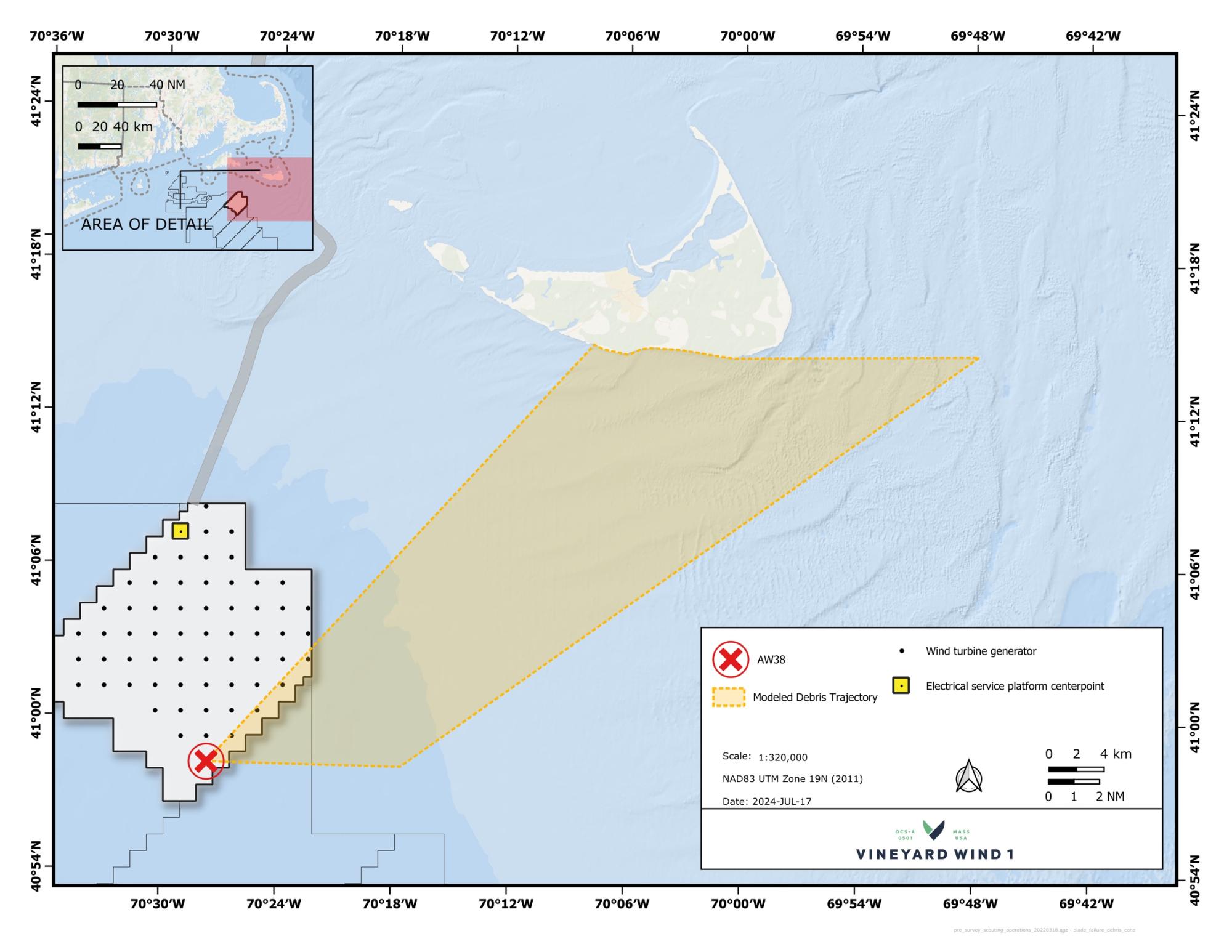
“The loss of a blade is very rare and should be considered an anomaly,” he said.
Prior to serial production, each model has to be certified in a process that involves laboratory testing to prove the blades can withstand winds of more than 150 miles per hour.
“The laboratory testing also ensures that the blade design is suited to survive extreme turbulent loading for its expected life of up to 30-years, although not all blades are tested,” he said.
Nantucket charter boat captain Carl Bois was one of the first members of the public to see the fiberglass from the turbine in the water when he was out on his boat near the turbines on Sunday.
The pieces, some large and others small, looked like green styrofoam and they were bobbing up and down in the water, at times hardly visible.
“I’ve never seen anything on the water quite like that,” he said.
At Wednesday’s select board hearing, many Nantucket residents questioned why it took Vineyard Wind about 48 hours to tell the island that this debris was headed their way.
“This community would have been much better prepared in terms of communicating to our residents about the impending risk before it became an actual risk, with debris on our beaches,” said Brooke Mohr, the select board chair. “I just want to state for the record, it was inadequate for this community.”
Other residents called for water testing to protect marine life and swimmers, as well as resources dedicated to long-term cleaning and aid for businesses hurt by the beach closures.
“It’s ruining my business short-term right now,” said Gaven Norton, the head of a surfing school on Nobadeer Beach. “But who knows how long this is going to go on.”
Vineyard Wind and GE Vernova said it would listen to the communities affected by the broken turbine and it was undertaking a “root cause analysis” to find out how the project, once promised as a major step toward tackling climate change, had gone so wrong so early in the construction.
“I’m really sorry that it happened, but I’m also glad to know that the response seems to have worked and we have now gotten most of the debris out,” said Mr. Moeller with Vineyard Wind. “But rest assured, we will not just leave this as it is now. We will monitor it, we will keep the whole team here as long as needed.”

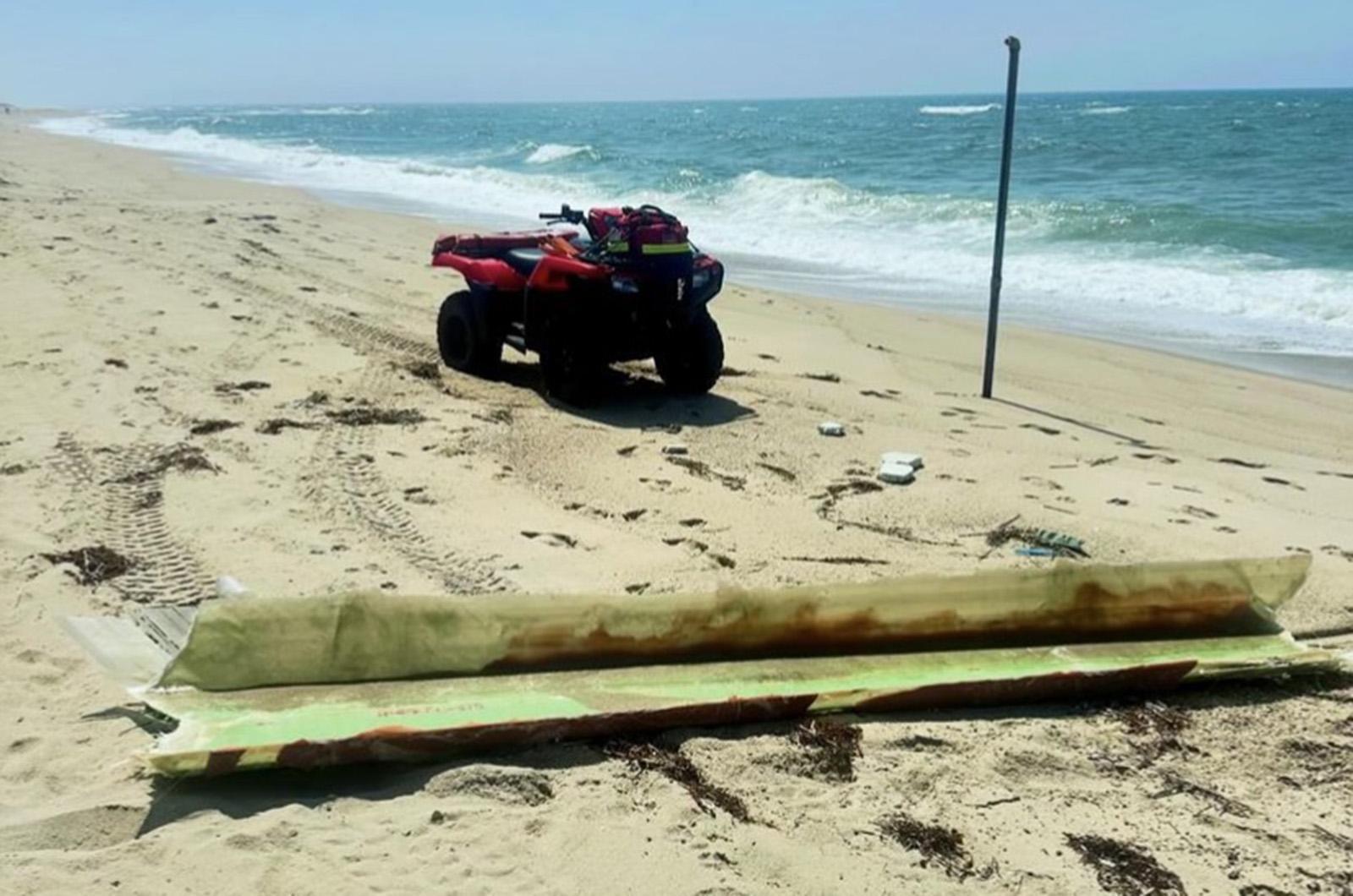
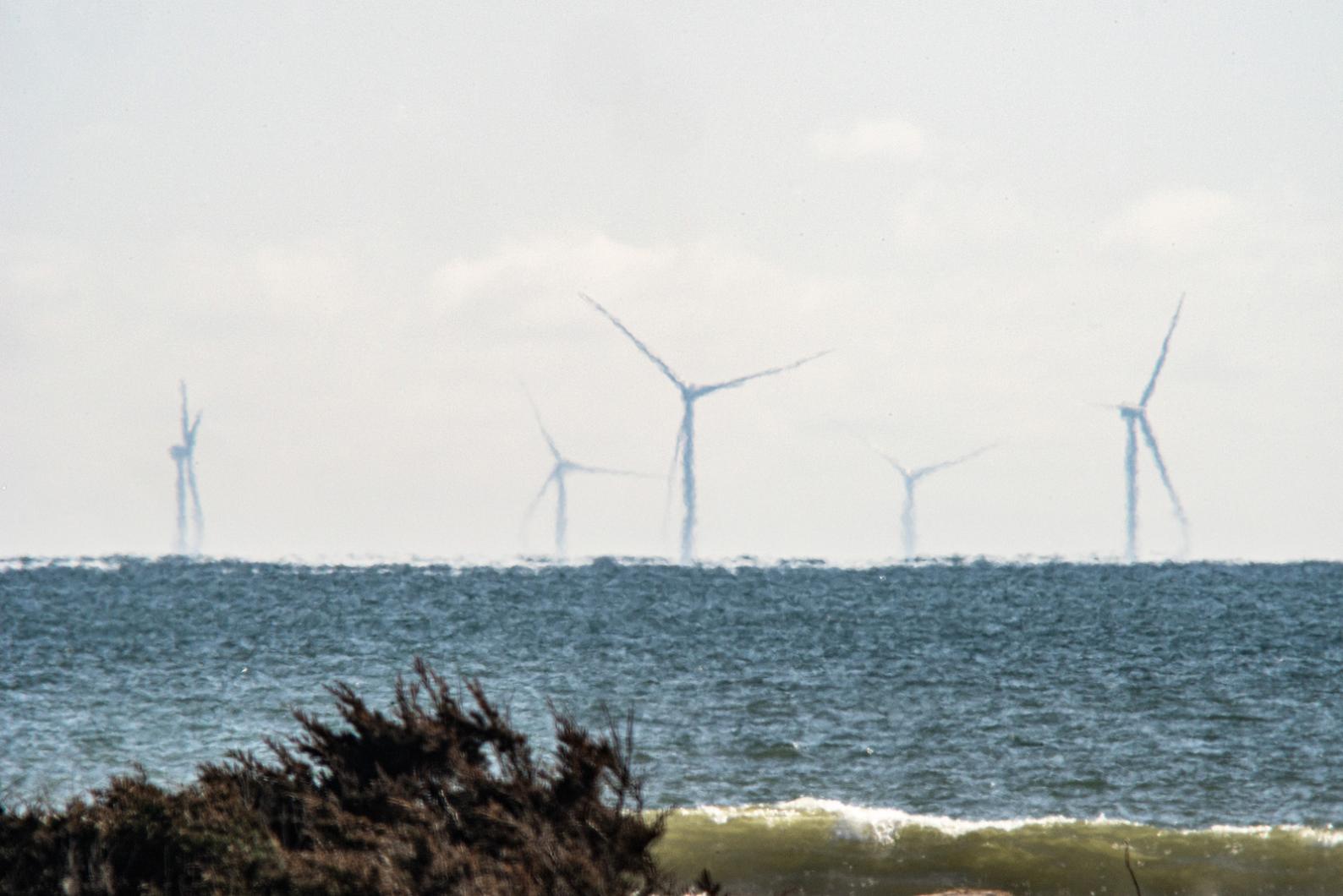

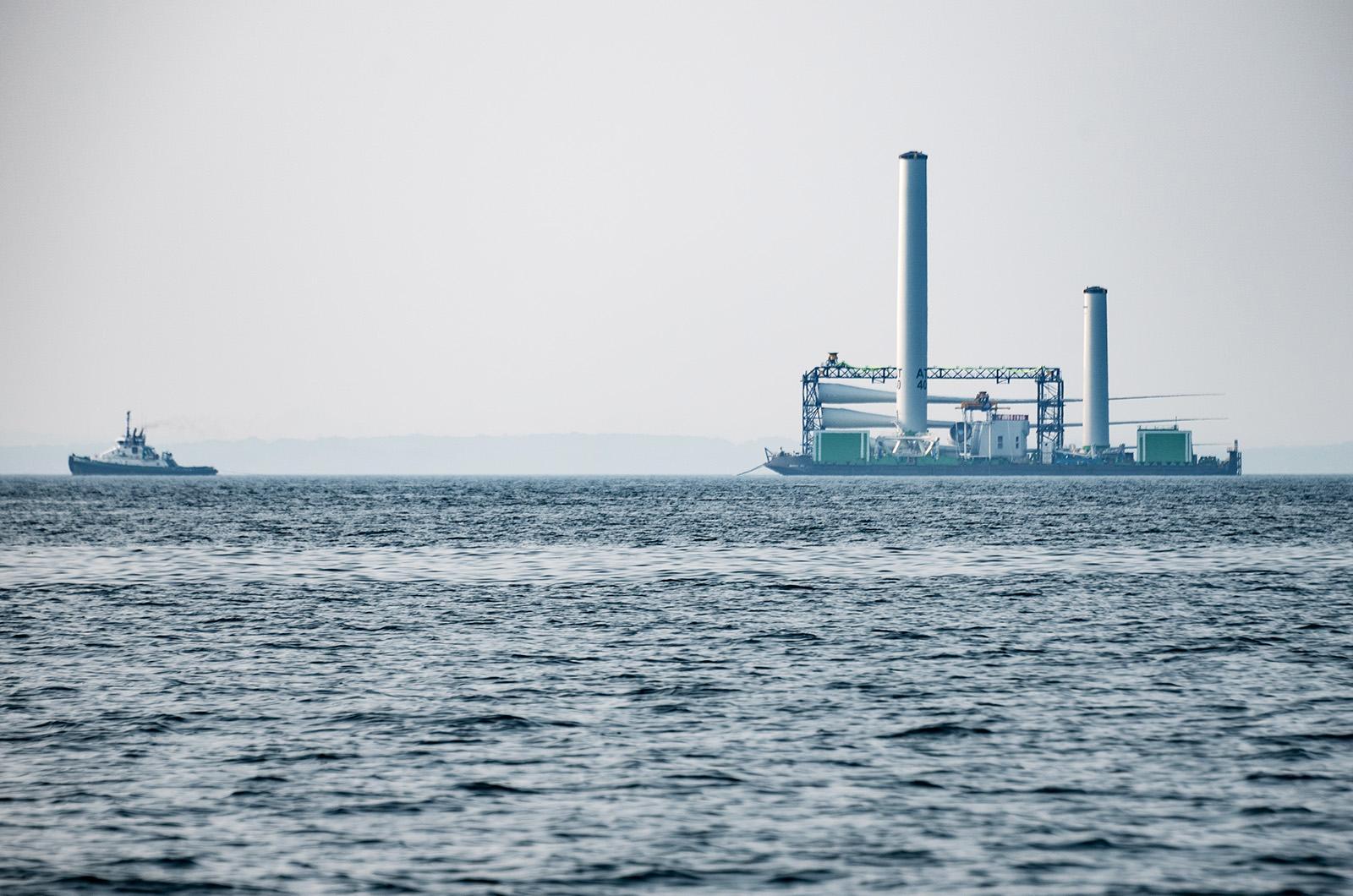





Comments (28)
Comments
Comment policy »